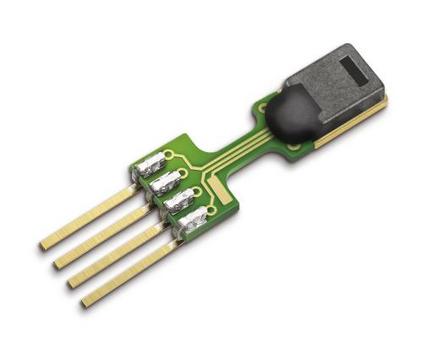In this paper, we present Tac2Pose, an object-specific approach to tactile pose estimation from the first touch for known objects. Given the object geometry, we learn a tailored perception model in simulation that estimates a probability distribution over possible object poses given a tactile observation. To do so, we simulate the contact shapes that a dense set of object poses would produce on the sensor. Then, given a new contact shape obtained from the sensor, we match it against the pre-computed set using an object-specific embedding learned using contrastive learning. We obtain contact shapes from the sensor with an object-agnostic calibration step that maps RGB tactile observations to binary contact shapes. This mapping, which can be reused across object and sensor instances, is the only step trained with real sensor data. This results in a perception model that localizes objects from the first real tactile observation. Importantly, it produces pose distributions and can incorporate additional pose constraints coming from other perception systems, contacts, or priors. We provide quantitative results for 20 objects. Tac2Pose provides high accuracy pose estimations from distinctive tactile observations while regressing meaningful pose distributions to account for those contact shapes that could result from different object poses. We also test Tac2Pose on object models reconstructed from a 3D scanner, to evaluate the robustness to uncertainty in the object model. Finally, we demonstrate the advantages of Tac2Pose compared with three baseline methods for tactile pose estimation: directly regressing the object pose with a neural network, matching an observed contact to a set of possible contacts using a standard classification neural network, and direct pixel comparison of an observed contact with a set of possible contacts. Website: http://mcube.mit.edu/research/tac2pose.html
翻译:在本文中, 我们展示了 Tac2Pose, 这是一种特定对象的触摸方法, 从第一个触摸中对已知对象进行估测。 在对象几何学中, 我们从模拟中学习一个定制的感知模型, 模拟中估计可能对象的概率分布会给一个触动观察带来触动。 为此, 我们模拟了一组密集物体在传感器上产生的接触形状。 然后, 从传感器获得一种新的接触形状, 我们用通过对比学习而学到的物体嵌入。 我们从传感器获得一个与特定对象2 相匹配的形状。 我们从一个目标- 感应校正校正校正的校正的校正步骤中, 将 RGB 触觉观测到二 分立的形状。 这样, 只能用真实的感应数据来训练这步子。 这导致一个感知模型, 将物体的分布会与其他感知系统、 联系人或前几部的束缚。 我们为20个对象提供了定量结果, 塔2Pection 比较对象的观察将Ract2P dact 进行直径直径直径的观测, 将显示一个直径直径直径直径的网络的感应显示一个直径直径直判的感应, 。 。 我们从一个感测算算算算算出一个感应一个感应一个感应一个感应一个感知模型, 。




